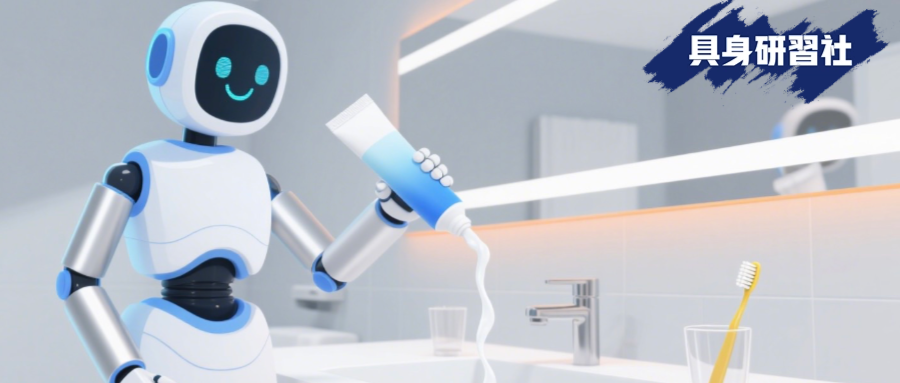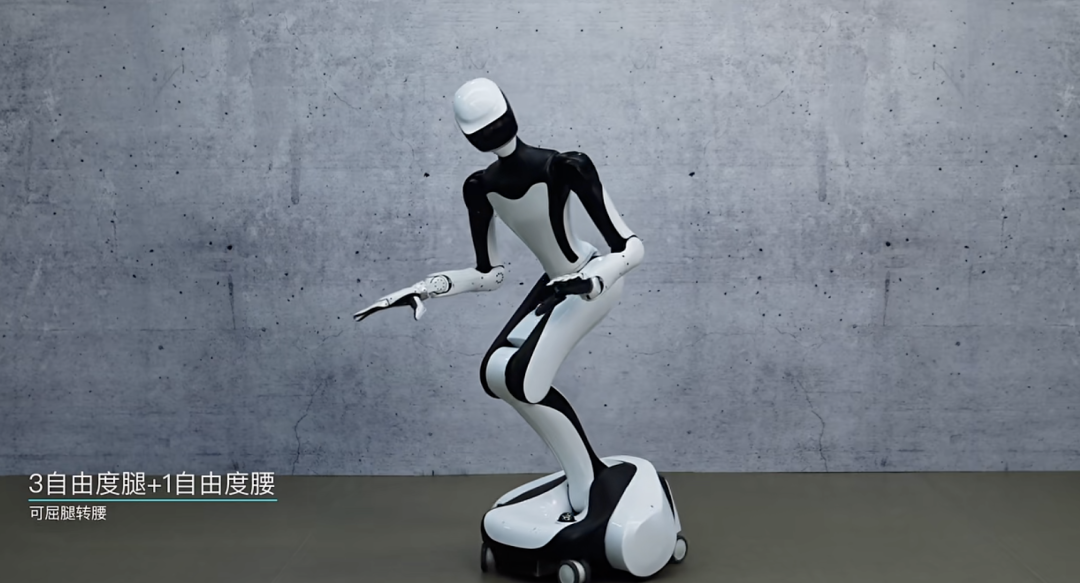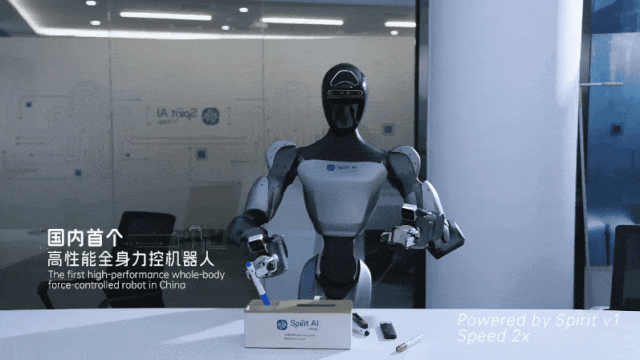Embodied Intelligence: Seizing the Opportunity of "Incremental Innovation" Before Technological Breakthroughs
![]() 08/28 2025
08/28 2025
![]() 534
534

Embodied intelligence does not rush towards a "technological explosion" but rather embarks on a gradual descent down a long slope. Hard technology "sprints" alone cannot easily achieve the final outcome. Only those enterprises that uphold user value, accumulate scenario experience, and refine commercialization capabilities over the long years of "soft innovation" will truly grasp the future of embodied intelligence when the inflection point of hard technology arrives.
Editor: Lv Xinyi
While the implementation direction and technical route of embodied intelligence are still in a stage of cognitive competition, the industry has reached a deep consensus: in the short term, it is difficult for "hard technology" innovation to achieve a breakthrough inflection point. The journey towards the "GPT moment" of embodied intelligence must still traverse a "silent period" of technological advancements.
Adding to the complexity, the urgency of commercialization looms large for all enterprises. If they fail to fulfill orders in the short term, it will not only be challenging to meet investor expectations but may also lead to losing ground in an increasingly competitive market and even missing the window for reserving resources for technology research and development and market expansion ahead of the "GPT moment".
As Morgan Stanley noted in its research report, "What Will Drive the Humanoid Sector in 2H25?", the keen reaction of the capital market reveals the current dilemma: from March to July this year, Chinese humanoid robot-related concept stocks experienced a callback of about 6%. This is attributed to shrinking shipment targets from domestic and foreign manufacturers, dampening confidence, and a lack of significant software and hardware breakthroughs in the industry, leading to insufficient technology expectations.
With the timetable for hard technology breakthroughs unclear and the demand for commercial monetization imminent, how can the industry break the deadlock? Looking back at the development history of consumer electronics, automobiles, and other fields, "soft innovation" is precisely the key path verified by multiple industries that bridges technological potential with commercial value.
Since Jobs slid to unlock the iPhone 4, smartphones have seen no revolutionary progress. However, this has not stopped phone manufacturers from continuously exerting efforts in subtle areas, making rapid strides in small increments, and improving cameras, speakers, batteries, and even size. Although sometimes ridiculed as "incremental innovation", these efforts effectively activate existing market demand and support continuous commercial growth for enterprises.
Embodied intelligence is now borrowing from smartphones' soft innovation strategies.
From WAIC to WRC and humanoid robot sports meets, "parameter comparison" and "price competition" are no longer the core strategies for enterprises. In other words, iterating hardware performance and reducing terminal selling prices can no longer effectively establish a company's market memory points nor form barriers for differentiated competition.
Instead, enterprises are continuously expanding in "small aspects", and a "marginal innovation" focused on user experience and scenario adaptation has begun. Optimizations in dimensions such as robots' appearance design, interaction logic, and function adaptation are becoming the core carriers for enterprises to deliver value and establish user connections. Just as humans gain recognition through image shaping and ability demonstration, robots are also accelerating their transformation from "technical prototypes" to "market products" through self-promotion and packaging.
These explorations collectively point to one conclusion: everyone anticipates the "inflection point moment", but before that, they must undergo a prolonged period of value accumulation through soft innovation. It is not an instantaneous disruption but a critical support for the industry to move from "technically feasible" to "commercially successful". The robot industry has taken decades to reach its current stage and must not falter now.
Humanoid robots also "judge people by their appearance"
The most intuitive manifestation of soft innovation lies in appearance innovation.
It directly determines whether users are willing to take a second look and is also the first hurdle for robots to enter real-world scenarios such as homes and businesses. Taking household scenario products as an example, by optimizing material texture, form design, and color matching, users' sense of alienation towards "mechanical products" can be quickly dispelled, making it the most easily perceived and memorable aspect of soft innovation.
Starbot Era's Q5 boasts a flexible and coordinated hourglass waist curve; Digital Huaxia's StarWalker is adorable; Zhiyuan Lingxi X2 has a round head, making people want to get close; even Unitree is about to launch an 1.8-meter robot, whose slim and tall silhouette is evident. These products have all invested heavily in their appearance.

Image source: Starbot Era
So, why focus on appearance innovation? The answer is straightforward. After all, the industry is still in its nascent stages, and users' understanding of robot performance needs to be cultivated. Especially when comparing several robots horizontally and finding no difference in parameters such as joint freedom and load capacity, consumers are more willing to pay for products with "high looks and pleasing aesthetics".
Changing perspectives, if robots are viewed as products rather than technology for sale, they definitely need product appearance design as a stepping stone to open the market. This is also the key to reaping the first benefits of the beauty dividend and securing orders. Just like the automotive industry, data from market research institutions shows that more than 70% of young consumers will prioritize the appearance design of vehicles when purchasing a car. This "static" charm is displayed earlier than the "dynamic experience" of robots.
At this stage, we can see that many enterprises have already paid attention to the matter of "appearance". In August alone, Fourier Intelligence signed a memorandum of cooperation with BASF to evaluate and develop new material solutions for various robot applications. Meanwhile, 361 Degrees cooperated with Standard Robots to develop clothing, footwear, accessories, and other equipment suitable for robots. Earlier, at the signing ceremony for the establishment of the "Humanoid Robot Sports Science Joint Laboratory" by Beijing Humanoid and Li-Ning, the "Tiangong" robot was even wearing Li-Ning Chitu 8 Pro running shoes and sportswear.
Furthermore, Fourier Intelligence had already had in-depth contact with the foam material listed company Runyang Technology as early as May and received a capital injection of 300 million yuan from it. The newly launched robot GR-3 in August wears a Morandi color scheme and soft, environmentally friendly "GFOAM" made by Runyang Technology.
In addition to enterprises emphasizing appearance and materials for product design, they also value users' own aesthetic needs.
Nowadays, many enterprises offer users optional painting services for robots. Unitree's newly released R1 robot can be customized in appearance. And Juwei Technology even opened a 4S store, offering 36 different color options. Furthermore, Zhongqing's "Iron Man" painting also showcases the aesthetics and playability of robots.
These cases all indicate that robot appearance is becoming an important breakthrough method in the early, scarce market.
But a further thought arises: as the industry matures and users' cognition of robots shifts from "trying something new" to "practical use", will appearance innovation lose its value? The answer may be no.
Just like cars, even as they evolve from "transportation tools" to "intelligent living spaces", appearance remains an important factor in user decision-making. In the future, appearance innovation for robots will also evolve from "basic good looks" to a higher dimension of "deep integration with scenarios and personalized matching with user aesthetics", continuously providing leverage points for soft innovation.
It should be emphasized that the urgency of soft innovation is not that the industry is in a dilemma with no stories to tell but rather that it is unfolding its narrative in a more subtle way. For example, talking about the appearance innovation of robots also implies innovation in the body structure itself, marking that the joints are mature enough to targetedly implement designs. From the early days when bulky joints were commonly installed to the current small-sized robots that can be fitted into clothing, technological maturity has left more design space for products.
Beyond Looks
Humanoid robots need to communicate with scenarios
Another layer of soft innovation is scenario innovation. Robots still need to rely on their skills to survive.
From scenario displays in the WRC to scenario-specific competitions in sports meets, it is evident that application scenarios have become clearer, with technological development deeply anchored to scenarios. However, on the other hand, scenarios are still relatively scarce overall, and the market is still relatively small.
The former shows us that there are already proven but also crowded commercialization paths in the industry, such as factories, hotels, and retail scenarios. The latter makes the industry also realize that relying solely on one scenario is difficult to sustain towards a universal endgame. This is not only due to the need for diversified data in technology but also considerations on how to survive in a scarce market.
Therefore, the strategies left for enterprises to break the deadlock are: mining differentiated scenarios to find new growth; and achieving full-scenario coverage to obtain orders as much as possible in the existing few types of scenarios.
There are already cases of mining differentiated scenarios. For example, Lingbao CASBOT jointly established the joint venture "Zhongke Shenkuang" with Shandong Zhaojin Group and Shandong Zhongkuang Group to jointly explore mining scenarios; and Qianxun Intelligence's humanoid robot "Moz1" entered the office scenario and became a new office employee.

Image source: Qianxun Intelligence
There are even more cases of full-scenario coverage. From round-the-clock guarding in unmanned pharmacies and supermarkets to collaborating with internationally renowned automobile companies for application landing tests and being competent for SPS sorting of automobile parts, Galaxy General has demonstrated the possibility of full-scenario coverage in both commercial and industrial fields, revealing the ambition of leading enterprises in scenario expansion.
The Beijing Humanoid Robot Innovation Center demonstrated a variety of sub-category scenarios focusing on the industrial field at the WRC, including power maintenance, assembly line sorting, parts quality inspection, item packaging, etc., showcasing its closed-loop capabilities across the full range of industrial scenarios.
In scenario expansion, to enable robots to better meet scenario operations, there is another advantage point for innovation—battery life.
UBTECH's hot-swappable autonomous battery swapping system for humanoid robots enables Walker S2 to work uninterruptedly for 7*24 hours. In the 24-hour walking operation challenge recently held by Zhiyuan Robotics, the Long March A2 also relied on hot-swappable battery swapping to achieve rapid energy replenishment without downtime.
There is also a "homogeneous" approach in full scenarios, which is to reconstruct market cognition through a complete product matrix and cover different scenarios based on multi-size, multi-configuration products.
- Zhongqing has launched the quadruped JS01, the small-sized biped SA02, and the bulky T800;
- Magic Atom has launched the small-sized biped Z1 and multiple quadruped or wheeled dog robots with different positioning;
- Zhiyuan has launched multiple quadruped D1 series products and also launched wheeled and wheeled humanoid products based on the biped Lingxi X2;
- Unitree has launched the A2 quadruped, the R1 small-sized biped, and will soon launch the 180 full-sized biped...
So, looking back, what is the significance of scenario innovation?
For enterprises, scenario innovation may be the core lever for commercialization. When technological development has not yet ushered in a steep curve, a differentiated scenario or full-scenario coverage may help enterprises win more orders.
For the industry, scenario innovation is a path choice to avoid intra-industry competition and thus move towards universalization more gently. It shifts the focus of industry competition from comparing technical parameters to implementing scenario value, enabling enterprises to develop healthily, accumulate technology and capital in the process of implementation, and ultimately go further and more solidly on the long and challenging road towards the universalization of robots.
Ultimately, the journey of embodied intelligence is not a short-course race of a "technological explosion" but a gradual descent down a long slope. No one can easily achieve the final outcome solely through the "sprint" of hard technology. Those enterprises that uphold "user value", accumulate "scenario experience", and refine "commercialization capabilities" over the long years of "soft innovation" will truly grasp the future of embodied intelligence when the inflection point of hard technology arrives.





